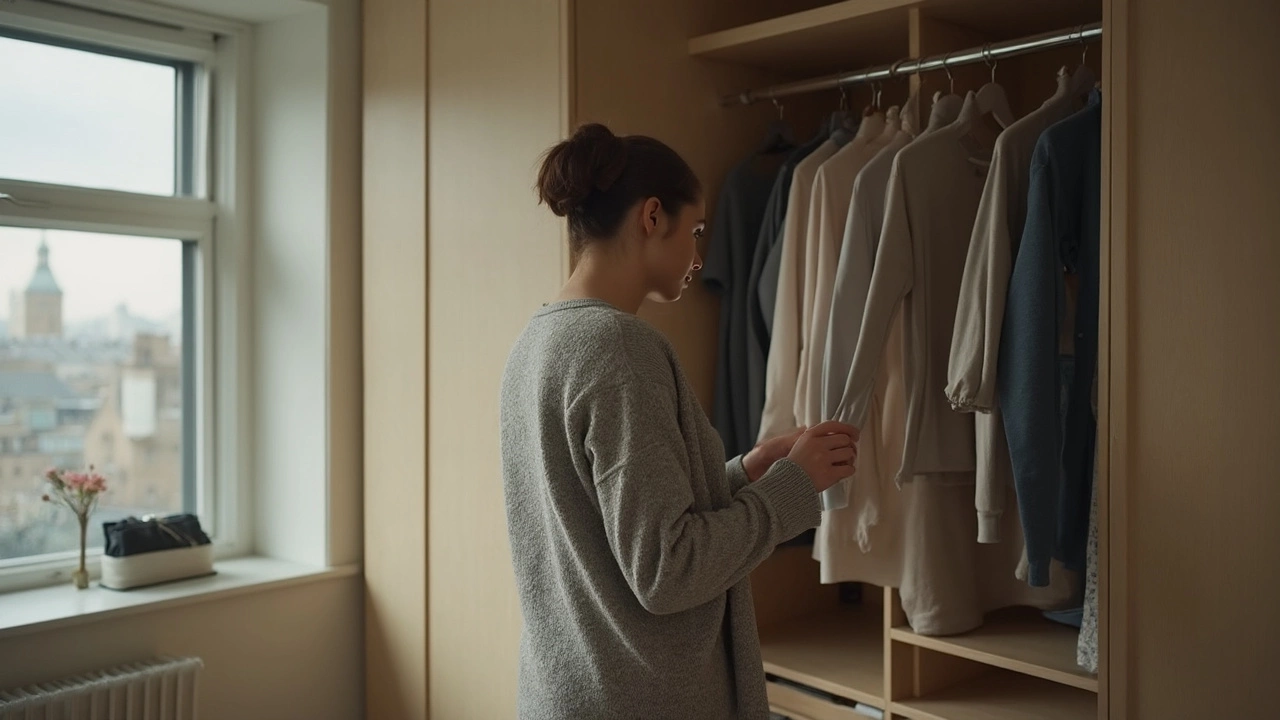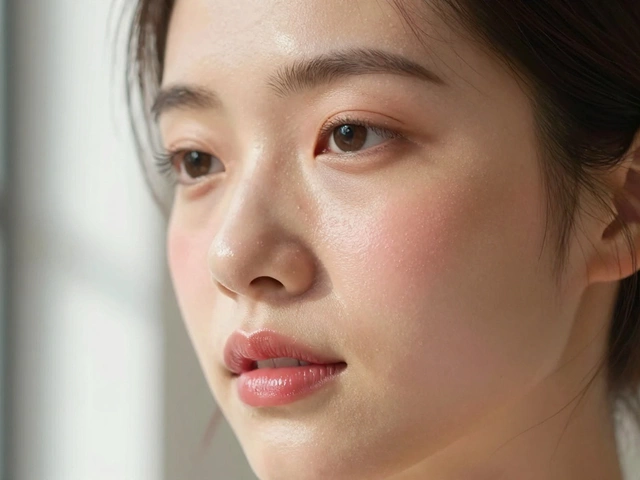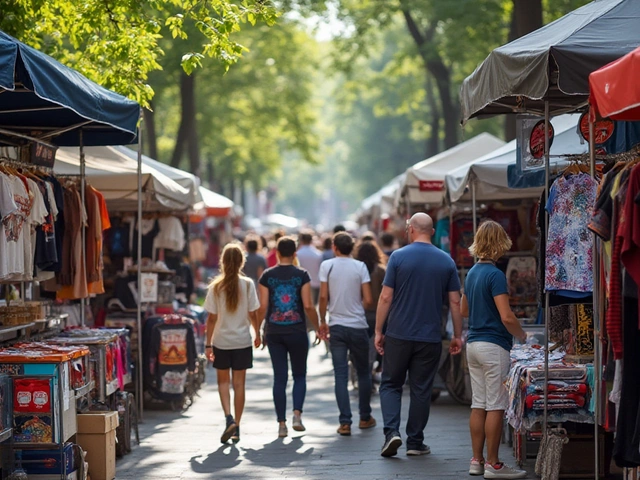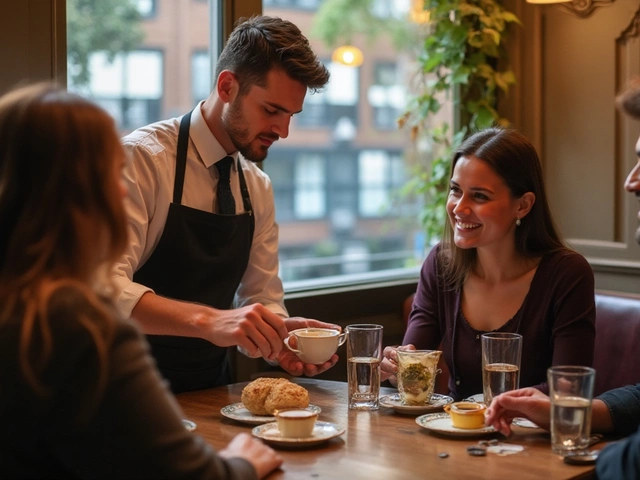When someone mentions minimalism, most people picture calm spaces, clean counters, and a free mind. So why do so many minimalists feel stressed keeping up with their own simple lifestyle? Here’s the wild part: trying to have less can end up making life more complicated. Minimalism comes with Twitter-ready slogans about “less is more,” but if you’ve ever panicked over which shirt to keep or stared at a blank wall that you hate, you know it’s not that easy.
Minimalism promises peace. What it sometimes delivers is pressure. Pressure to own only what ‘sparks joy.’ Pressure to purge things you might need later. Pressure to make your life fit into an Instagram square. Many folks even toss stuff they love just because it looks ‘cluttered’ online. That’s the paradox—chasing a simpler life can turn complicated, fast. So, how do you avoid the trap and actually find the calm you were after? Let’s dig in and answer that question with real talk, not just another list of things to throw away.
- Minimalism: The Promise vs The Reality
- How Minimalism Gets Complicated
- Why Chasing Perfection Backfires
- The Guilt Trap and Decision Overload
- Tips for Finding Balance
- Real-Life Minimalism: What Actually Works
Minimalism: The Promise vs The Reality
Minimalism has blown up in recent years. Scroll through Instagram or YouTube and you’ll see endless posts about serene white rooms, capsule wardrobes, and tiny homes. The big promise is simple: cut back your stuff, and life will get calm, easy, and less stressful. Less clutter supposedly means less anxiety. Minimalism champions claim you’ll save money, make faster choices, and feel lighter. Who doesn’t want all that?
But here’s where reality hits: most people just don’t live in a magazine spread. Real life is messy. Most of us have hobbies, families, or kids who seem to spawn plastic toys like a factory. The promise sounds amazing, but as soon as you start decluttering, you might feel more anxious instead of relaxed. Some folks even report feeling ‘declutter guilt’—thinking they’ve failed if they buy something new or don’t use every item perfectly.
A 2023 survey by Statista found that nearly 36% of people who tried minimalism felt stressed by the constant maintenance of their minimalist routine. That's a chunk of the crowd who expected zen and got stress. Real life minimalism doesn’t always mean tossing everything you own. Sometimes you need backup sneakers or old school yearbooks. And not every home or lifestyle fits the Instagram version of minimalism.
Check out this quick reality check of promises vs. common outcomes:
| Minimalism Promise | What Really Happens |
|---|---|
| Always feel relaxed in clutter-free spaces | Suddenly worry about keeping it perfectly clean |
| Save money with fewer purchases | End up buying more expensive “forever” items |
| Simple life, fewer choices | Puzzle over getting rid of sentimental stuff |
| Quick decisions every day | Spend ages organizing what little you have left |
The minimalism paradox is real. It’s all about realizing that the glossy promise doesn’t always match up to what actually happens when you try to live it. Understanding this gap is the first step in making minimalism work for you, instead of against you.
How Minimalism Gets Complicated
Minimalism is supposed to save us from constant decision-making and clutter, but it often ends up being another thing to manage. You start with the big closet purge, you feel lighter... and then you start doubting: "Did I toss the wrong T-shirt?" Or maybe you feel guilty about wanting something just because it looks fun, not because you need it. There’s even a name for this—"decision fatigue." Getting rid of stuff isn’t the end; it’s the start of a whole new set of choices.
There’s social pressure too. Scroll through #minimalism on Instagram and you’ll see spotless all-white kitchens and barely-there living rooms. Suddenly, having a few personal touches or even some necessary tools can feel "wrong." A recent survey by The Minimalists found that over 48% of people trying minimalism felt anxiety over not doing it "right" or being judged for not living up to the image.
| Challenge | Percentage Affected |
|---|---|
| Feeling guilty for buying something new | 55% |
| Worry about decluttering too much | 42% |
| Stress from trying to maintain a tidy home | 61% |
You might also run into the "replace to be minimalist" trap, where you end up getting rid of perfectly good things only to buy "minimalist-approved" versions. It's a sneaky kind of consumerism. Pretty soon, minimalism isn't saving money or time—it's just a different way to shop and stress.
- People spend an average of 2.5 hours per week reading articles or watching videos about how to declutter, according to a 2023 LifeTracker survey.
- Declutter confusion is real: 34% of new minimalists report second-guessing their choices after donating personal items.
The minimalism paradox shows up fast: the more you try to strip your life down to essentials, the more you risk missing out on comfort or convenience. You'll see entire online forums (seriously, check Reddit) full of people unsure if they're "minimalist enough" or stressed because their daily life doesn’t look like a magazine feature. If you catch yourself working too hard to be simple, that's the first sign it’s getting complicated.
Why Chasing Perfection Backfires
Here’s the thing: the hunt for that 'perfect' minimalist vibe often ends up doing more harm than good. Tons of people start out wanting to clear the junk and create a chill home, but somewhere along the way, the whole idea of perfection takes over. Instead of feeling free, you end up stressing over matching jars, white walls, or if your five pairs of shoes are too many.
The pressure gets worse when you scroll through perfectly staged homes online. A study by the Pew Research Center in 2023 found that 45% of young adults feel anxious about their space after seeing minimalism posts on social media. That’s nearly half who feel they're not ‘doing it right’! The thing is—real life isn't a magazine. Dishes get left out, mail piles up, and not everything you own fits into a neutral color scheme.
What a lot of folks don’t realize is that the pursuit of this minimalism paradox often turns into perfectionism. This can leave you feeling less satisfied, not more. Don’t be surprised if you end up making endless lists of things to get rid of or feel guilty about the smallest bit of mess. Psychology Today pinpointed that perfectionism linked to minimalism has led to increased decision fatigue and, oddly enough, more impulse purchases to 'improve' the look.
If you’re stuck in this trap, here’s how you know chasing perfection is backfiring:
- You can’t relax until everything is in a certain order.
- You get annoyed by signs of ‘real life’—like laundry or kids’ toys.
- You keep buying ‘the right’ storage stuff or replacing things that work.
- You feel like you don’t measure up when you see other minimalist homes online.
Notice how these are all about control and anxiety—not happiness or ease.
| Perfectionist Minimalism | Practical Minimalism |
|---|---|
| Focuses on a flawless look | Focuses on function and calm |
| Triggers guilt after a small 'mistake' | Accepts everyday messes |
| Constantly tweaks or shops for 'better' | Makes do with what works |
| Leads to decision fatigue | Saves time and energy |
If you’re finding minimalism more draining than freeing, it’s probably time to drop the chase for perfection. The sweet spot is somewhere between ‘nothing out of place’ and ‘my life is overflowing.’ Forget perfect. Go for what actually feels doable, and you’ll get the peace you signed up for.
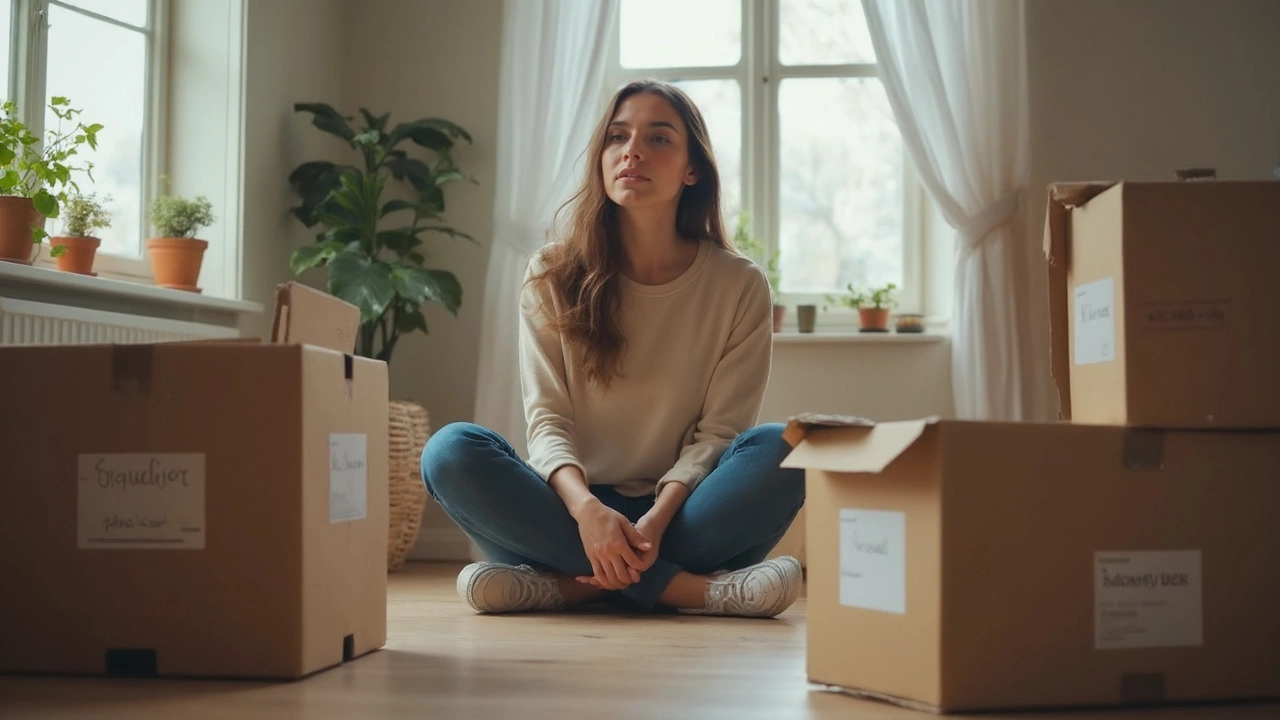
The Guilt Trap and Decision Overload
Here’s something you probably haven’t seen on those perfectly staged minimalism feeds—guilt. Loads of it. When you start tossing out things, it’s easy to second-guess yourself and wonder if you’re doing minimalism the "right" way. Got a bunch of sentimental mementos? If you keep them, you feel less like a "real" minimalist. If you toss them, guilt creeps in. This tug-of-war isn’t just in your head. A 2022 survey by YouGov found that 41% of people who tried decluttering felt guilty about letting go of gifts or family items. This feeling can actually make you freeze up and ditch the whole idea.
Then there’s the sheer amount of choices you face—what to keep, what to ditch, what you might need if plans change. It’s not simple. Psychologists call this decision fatigue, and it’s real. Every extra choice chips away at your willpower. Barry Schwartz wrote in "The Paradox of Choice" that too many decisions can leave you less satisfied, not more. In minimalism, the constant pressure to make the "perfect" call for every object can feel like an endless homework assignment.
Here’s where it gets wild: the guilt and mental load can be worse than just living with some clutter. Check out this quick snapshot:
| Feeling | % of People Experiencing It (Decluttering) |
|---|---|
| Guilt (letting go of gifts/family items) | 41% |
| Regret (donating or tossing something needed later) | 27% |
| Overwhelm (decision fatigue) | 38% |
Trying to live a cleaner life can turn into an emotional rollercoaster. Here’s what helps: don’t aim for a perfect minimalist lifestyle. Accept that it’s normal to feel attached to things or to regret getting rid of something. Set boundaries that make sense for you, not some influencer. If you realize you’re stuck in guilt or decision overload, take a break, talk it out with a friend, or even make a rule like "one drawer a week" to slow down the pressure. Minimalism isn’t an all-or-nothing game—it’s a tool, and you get to decide how to use it.
Tips for Finding Balance
Finding the sweet spot with minimalism isn’t just about tossing half your stuff. It’s about setting up a style that actually works for your everyday life. Experts like Joshua Fields Millburn and Ryan Nicodemus—the pair behind The Minimalists—point out that there’s no ‘perfect number’ of things you should own. Instead, the real trick is making sure what you have lines up with your values and routines.
Here are a few practical ways to keep your version of minimalist lifestyle chill and honest, not stressful:
- Set your own standards: Decide what minimalism means for you. Maybe that’s a ten-minute tidy each morning, or choosing a small but comfy wardrobe that covers what you actually wear. Forget trying to look like a magazine spread unless that’s really you.
- Keep what you use—even if it’s not pretty: That ugly mug from your grandma? If you reach for it every day, it has a place in your home. Function matters more than looks when it keeps life easy.
- Watch out for the guilt zone: If getting rid of stuff makes you anxious, slow down. Swap your binge-declutters for smaller steps, like donating one book per week, or organizing one drawer at a time.
- Block out social media noise: Inspirational reels might be motivating at first, but sometimes they just make you feel like a failure if your place isn’t minimalist enough. Follow people who are honest about their messier corners, not just the ones with perfect white walls.
Stanford research from 2022 actually found that people who set their own flexible rules with minimalism reported less stress and a higher sense of control, compared to folks who stuck to strict decluttering programs. So you don’t have to do it all at once—and you don’t have to do it like anyone else.
Balance isn’t static either. Check in with yourself every few months. Has your life changed? New job, new pet, new hobby? Let your space shift with you. Minimalism should make your days easier—not give you another to-do list to dread. Use it as a tool, not a competition.
Real-Life Minimalism: What Actually Works
Forget the Pinterest posts showing flawless white rooms. Most real minimalists don’t live in picture-perfect spaces. Surveys from 2023 showed that about 57% of people who tried minimalism kept some clutter, and only 18% hit those super-sparse goals you see online. Minimalism that actually sticks is practical, not extreme. Here’s what works for real people—not just influencers.
First, successful minimalists set their own rules. They don’t chase a number or copy someone else’s method. Maybe it means keeping two coffee mugs instead of one, or having a messy junk drawer. Minimalism isn’t about living with the bare minimum. It’s about making space for what matters.
One good way to do this? Focus on your biggest time-wasters and pain points, not your shoe rack. Annoyed by stacks of unread magazines? That’s a spot for minimalism. Constant battle with kitchen gadgets? Ditch the ones gathering dust. Most folks who stick with minimalism solve real, daily problems instead of forcing themselves to meet someone else’s idea of ‘less.’
There’s strong evidence that small steps work better than giant overhauls. The 2022 National Survey on Home Organization found that people who gave themselves a year or more to declutter were much less likely to rebound into messy habits again—just 22% went back to old ways, compared with 61% who did one big purge.
- Start by clearing one drawer or shelf. See how it feels and use that as your motivation to keep going.
- Remember: The goal is less stress, not empty rooms. If something you keep actually makes your life easier or happier, it’s not clutter.
- Feel free to press pause. You don’t have to get rid of things in one weekend. Take it slow.
- Track what you use—put a piece of tape on kitchen gear or closet hangers, and only toss what goes unused for months.
If you need a little inspiration, check out these real numbers:
| Minimalist Habit | Success Rate (18+ months) |
|---|---|
| Weekly small declutters | 78% |
| One-time big cleanouts | 39% |
| Setting room-by-room rules | 59% |
Here’s the main thing: minimalism paradox isn’t about perfection or living like a monk. If you focus on what helps you, ignore the rest, and let your space fit your life—not some internet trend—you’ll find what actually works. That’s about as real as it gets.
